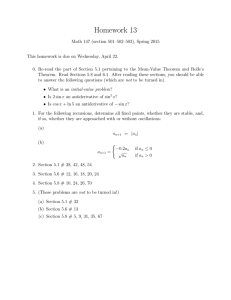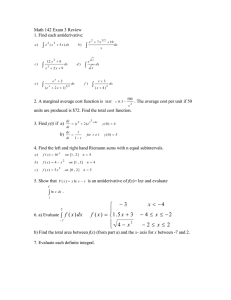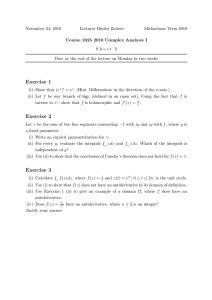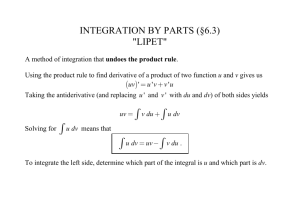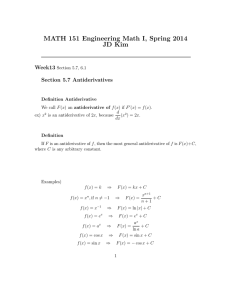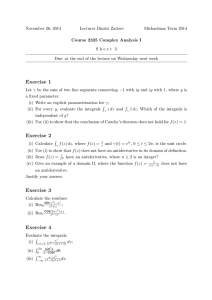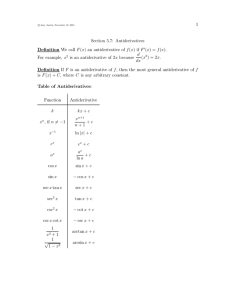Document 10581598
advertisement
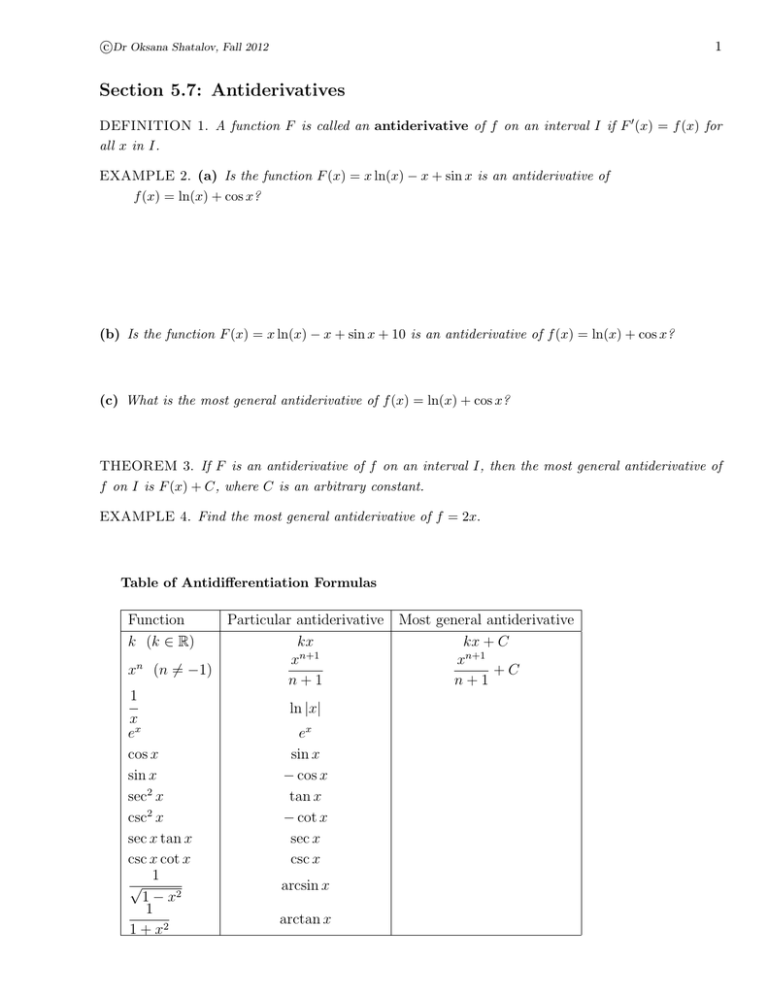
c Dr Oksana Shatalov, Fall 2012 1 Section 5.7: Antiderivatives DEFINITION 1. A function F is called an antiderivative of f on an interval I if F 0 (x) = f (x) for all x in I. EXAMPLE 2. (a) Is the function F (x) = x ln(x) − x + sin x is an antiderivative of f (x) = ln(x) + cos x? (b) Is the function F (x) = x ln(x) − x + sin x + 10 is an antiderivative of f (x) = ln(x) + cos x? (c) What is the most general antiderivative of f (x) = ln(x) + cos x? THEOREM 3. If F is an antiderivative of f on an interval I, then the most general antiderivative of f on I is F (x) + C, where C is an arbitrary constant. EXAMPLE 4. Find the most general antiderivative of f = 2x. Table of Antidifferentiation Formulas Function k (k ∈ R) xn Particular antiderivative Most general antiderivative kx kx + C n+1 x xn+1 +C (n 6= −1) n+1 n+1 1 x ex cos x sin x sec2 x csc2 x sec x tan x csc x cot x 1 √ 1 − x2 1 1 + x2 ln |x| ex sin x − cos x tan x − cot x sec x csc x arcsin x arctan x c Dr Oksana Shatalov, Fall 2012 2 EXAMPLE 5. Find the most general antiderivative of f where √ 8 (a) f (x) = 5 sin x + 7x6 − x7 + 15 (b) f (x) = 3x + 8 − x2 x3 (c) f (x) = ex + (1 − x2 )−1/2 EXAMPLE 6. Find f (x) given that f 0 (x) = 4 − 3(1 + x2 )−1 , f (1) = 0. c Dr Oksana Shatalov, Fall 2012 EXAMPLE 7. Find f (x) given that f 00 (x) = 3ex + 5sinx, 3 f (0) = 1, f 0 (0) = 2. EXAMPLE 8. A particle is moving according to acceleration a(t) = 2t + 2. Find the position, s(t), of the object at time t if we know s(0) = 1 and v(0) = −2. c Dr Oksana Shatalov, Fall 2012 4 EXAMPLE 9. Show that for motion in a straight line with a constant acceleration a, initial velocity v0 , and initial displacement s0 , the displacement after time t is 1 s(t) = at2 + v0 t + s0 . 2 EXAMPLE 10. A stone is thrown downward from a 450 m tall building at a speed of 5 meters per second. Derive a formula for the distance of the stone above ground level. c Dr Oksana Shatalov, Fall 2012 5 EXAMPLE 11. A car braked with a constant deceleration of 40ft/s2 , producing skid marks measuring 160ft before coming to a stop. How fast was the car traveling when the brakes were first applied?

